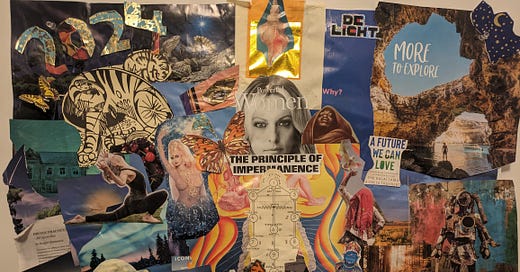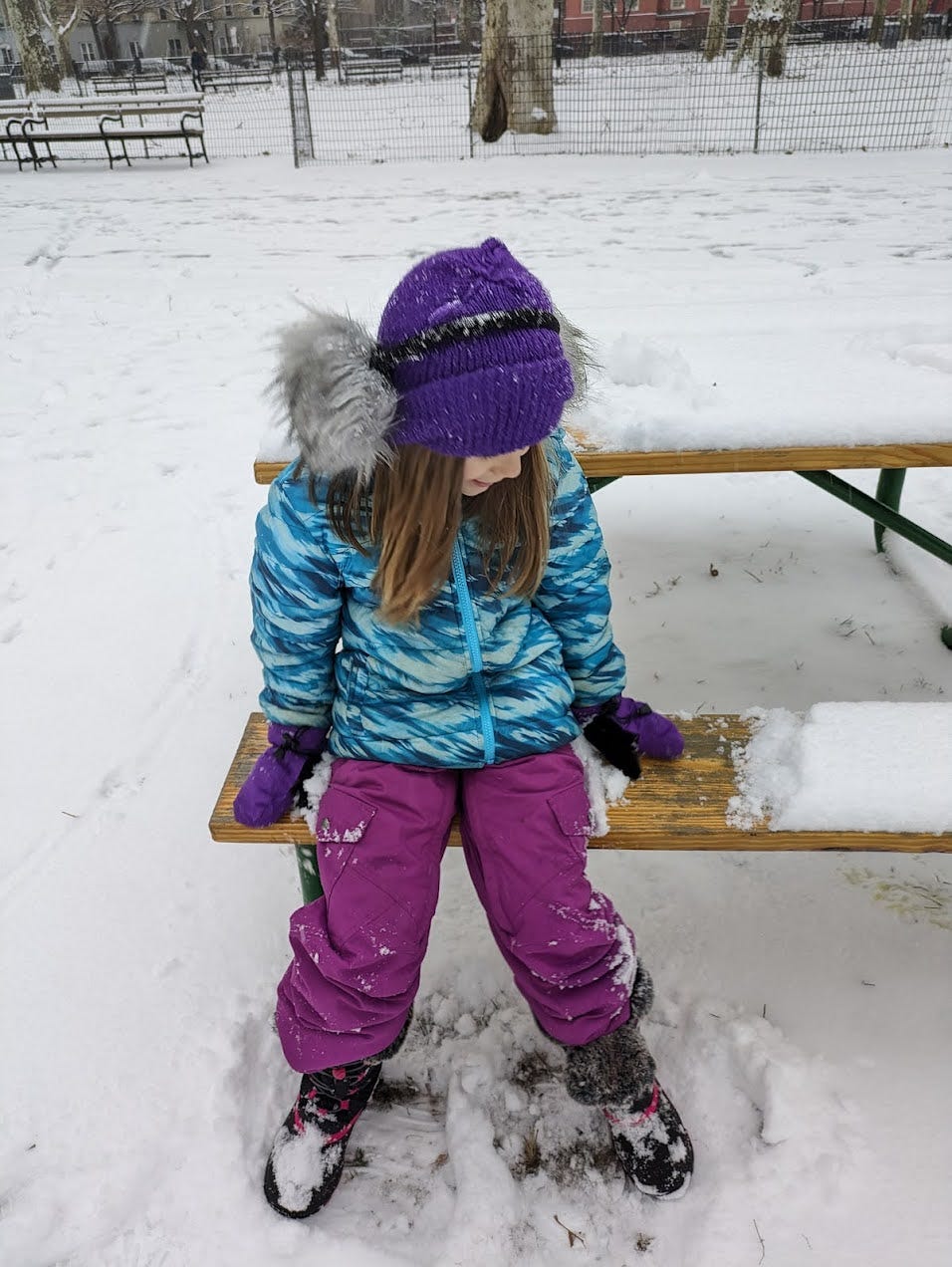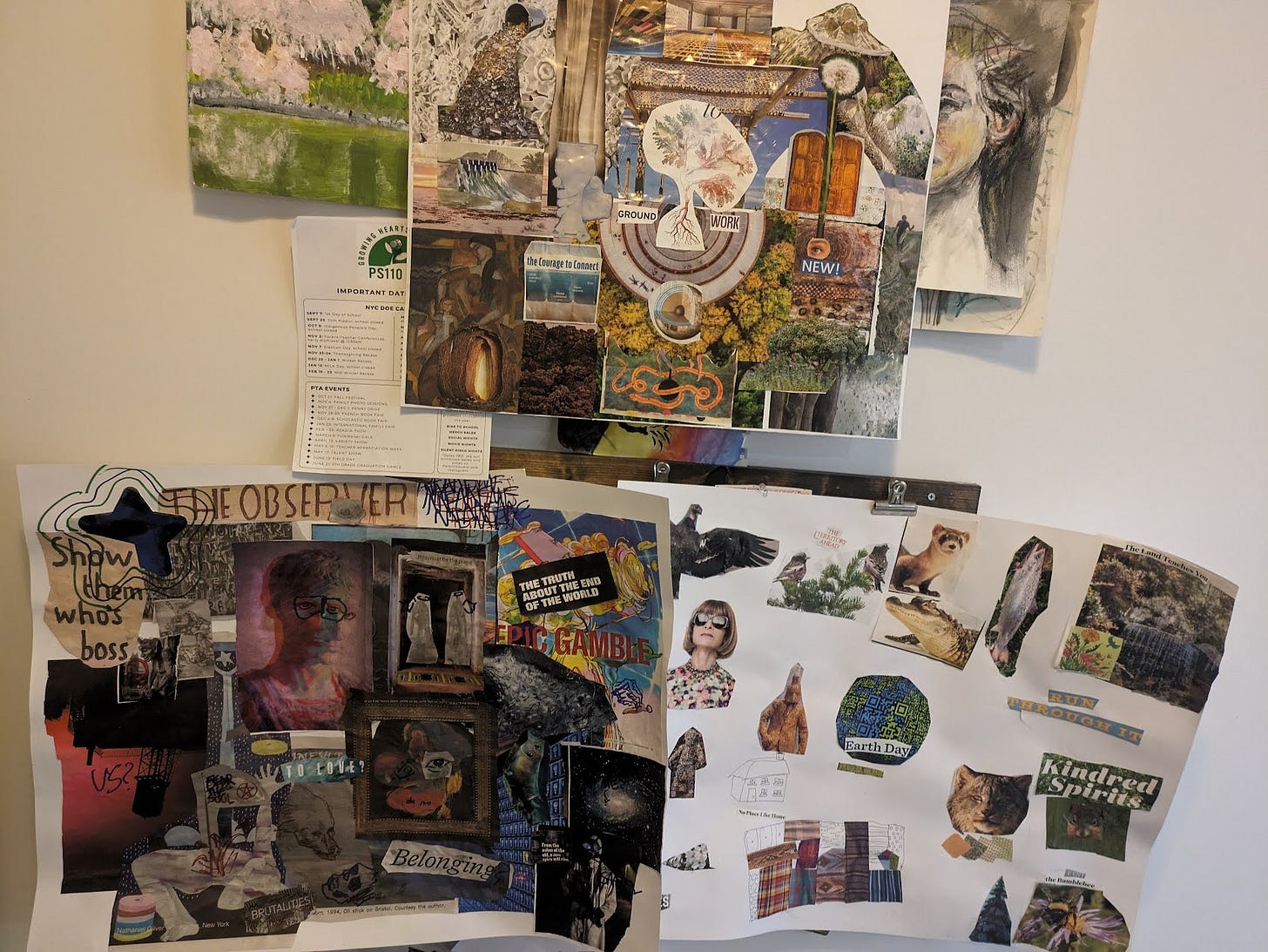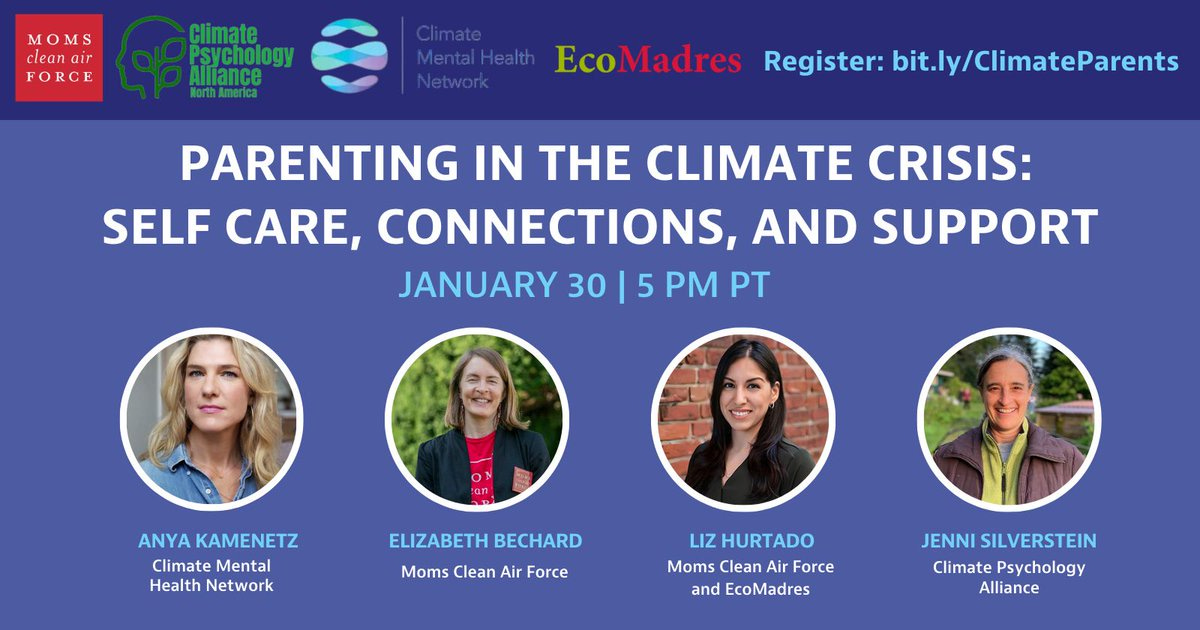Creativity as an Antidote to Despair
New Year's vision boards, Kat Davis, adrienne maree brown, Dr. Who, and more
Hello friends. Current mood: childlike delight as the snow falls outside my window, breaking a two-year snow drought in New York City.
Have you heard of the ”snow loss cliff”? A recent article in The Atlantic clued me in to this elegaic new term. It was coined by two ecologists at Dartmouth. They determined that after average winter temperatures exceed 17°F, snowpack starts to decay quickly and irreversibly.
Without diminishing this sadness, I can also observe that like spring blossoms, snow is lovely precisely because it’s ephemeral. That may be why both are such popular topics for haiku.
Come, let’s go
Snow-viewing
Till we’re buried.— Basho
This past weekend was one of my favorite events on my personal calendar. Every January since 2009 or so, I’ve invited friends to join me in making vision boards for the New Year. I keep mine up in my office all year.
For the past six years, remotely during the pandemic, I’ve co-hosted the event with my dear friends Elke and Jason, who run a soulful events space in Brooklyn with the incredible name of Delight Factory. Because it’s now listed publicly, the event brings in a mix of curious strangers and some of my heart’s greatest friends. I always make sure everyone shows me their collage before they leave. It’s so tender seeing people’s dearest aspirations made visible. And sometimes I’ve gotten to see dreams turn into reality.
It’s a perfect illustration of the principle that Kat Davis invokes in her work.
“How I would describe what I do at large is I work to create systems change, and pretty much every role that I'm in is mobilizing aroung building a radical imagination, for what a future can look like that is more just and more sustainable, and more equitable, and more healthy and more fun and joyous.”
I first met Davis in her role as Advisor for Climate Justice at Portland Public Schools. She also teaches a workshop titled “From Climate Anxiety to Action: Tools to Build a Radical Imagination,” so I wanted to ask her about that.
She has a cool career path to share. She used to work at Boise State as a sustainability director. From there she got interested in what inspires sustainable behavior. So she pursued an interdisciplinary master’s degree in user experience and user research. Around 2020, she came across Sarah Jaquette Ray’s book A Field Guide to Climate Anxiety: How to Keep Your Cool on a Warming Planet .
In her work with college students, Davis says, she kept “seeing the barriers to change not being knowledge or will but this larger sense of paralysis: Not feeling like you have a tangible idea of what a future of solutions looks like, not feeling like you're empowered to participate in that future. And feeling like, even if you did feel like you could participate, you wouldn't be doing it right, anyway. And not feeling connected to community.” I can so relate to this. All of this.
As an antidote, she says,
“I started to uncover these kind of dual concepts of critical hope as well as radical imagination.
“Critical hope: grounding your hope and optimism within the reality of the actual context around you, and not dismissing the burdens and barriers around you. I don't think it helps climate anxiety to completely dismiss the idea that there's crises happening all around us. Things that have caused the climate crisis are the same things that cause different systems of oppression. So we look at hyper-individualism and hierarchy and scarcity and things like that.
“And then, radical imagination is being able to actually envision a future of change.
“Everything from cognitive behavioral therapy to liberation movements… really understands that you need to be able to envision what you are trying to work for positively. And we have so many images out there in the media and in our own anxious brains about what a future of doom looks like that it's really important that we can imagine a future worth fighting for. A future in which we can thrive.
Like adrienne maree brown says, all organizing is science fiction. We're building a world that doesn't exist yet.
The thirteenth Doctor Who says “whole worlds pivot on acts of imagination.” Which gave me the tingles when I saw that.”
In the workshops, Davis gets people working together on design projects. “I think design is really important, because design makes imagination an actual plan or pathway,” she says. For example, she might ask students to reimagine a courtyard on their campus as a place that might grow food, offer a place to relax and connect, give people shelter during storms, and improve stormwater drainage at the same time.
Often, they use a Google jamboard, like a virtual whiteboard, and search for images online to make a kind of collage.
The process is collaborative. It’s a community-building exercise as well as a creative one. And she encourages people to be playful. “If you want to add, like, a hopscotch that powers the lights through kinetic energy—let yourself get a little goofy with it.”
At the same time, “You can come up with a project management strategy to make part of it a reality.”
It’s the emphasis on joy that really feels wise and new to me—and great medicine for parents with our kids, in particular.
“If we're gonna build a new world that doesn't exist, we might as well have fun with it.”
Links
I wrote for New York Magazine about the dark side of mental health days.
Join Me For A Webinar - January 30
It will be a great group! Sign up here.









